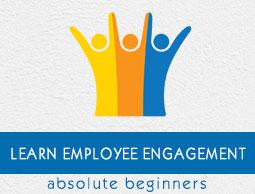Employee Engagement - Activities
Before you start spinning numbers and planning activities, you need to realize that employee engagement is a mindset. The only way that an engagement strategy will yield results is if you start with the “why” of the matter, with each activity and event you plan.
Start by looking at your team as real people with ideas, aspirations, accomplishments and challenges, within the workplace and outside of it. These people are not some means to generate business results, but they are a formidable resource that needs to be understood and nurtured to deliver on what is expected of them as workers.
Employee engagement is not an isolated HR process. For it to deliver, it needs organizational commitment and involvement to implement efficient initiatives.
Involving Employees in Business Planning Process
Every 6 months or even quarterly, present the most important issues in your company and the actions made to address those issues. Involve your team in planning ahead, assessing opportunities and coming up with improvement ideas for your business strategy.
By promoting transparency and offering them a strategic insight into how the company is being managed, you will foster loyalty and you will also have a prepared leadership pipeline.

Create a Knowledge Sharing System
One of the biggest costs of a high employee turnover rate is the loss of essential information. A knowledge sharing system helps you avoid that cost to some extent and it is also a great engagement driver for newcomers.
You can have a mentorship program, pairing experienced employees with newly hired ones. Create a learning program template that they should follow, giving them enough space to test their own learning methods. Give them a timeframe, a set of objectives and let the relationship unfold on its own.
Encourage Knowledge Sharing in a Creative Way
Teams are oftentimes isolated within their own project and their own workspace, that they have no idea what the rest of the company is doing. Create an open sharing space once in every 2 months or so, where every team can present updates on their project and key learning points. Teams will evolve much more rapidly, using the knowledge shared and the different experiences on every project.
To minimize the risk of this turning into a boring, mandatory 2 hours meeting, make it fun and creative. You can have a theme per each sharing session. For example, this month’s theme is “Mafia Movies” and the Sales Team decides to present its updates in a Godfather-like manner. Remember, creativity is a key happiness driver.
Show them the Money
Nothing builds trust like showing someone your financial statement and that is exactly what you should do in your company. Give your team a quick presentation of the financial state of your company, every quarter or at the end of the year. Show them how everyone’s efforts are linked together, set bold objectives for the coming months and get everyone involved in meeting those objectives. You will notice that this activity links back to the first one.
Encourage and Provide Learning Opportunities
Create your own Academy, where employees can access the knowledge and development opportunities that they need. This is one of the top 3 reasons why employees quit companies: lack of learning prospects.
Assess their needs and their preferences, create a curriculum and set-up 1 to 2 classes per week. Get them involved in deciding how you should schedule these learning initiatives. Make it engaging and rewarding with a Graduation ceremony, caps and flowers and even a fun night out.
Create Excitement about the Upcoming Opportunities
Make sure you communicate upcoming opportunities on a regular basis. Get employees excited and striving for what is next. Do it in your internal newsletter, face-to-face or during a general update meeting.
If they are excited about what’s next, they will do their best and reply with a “No, thank you” to those irritating poaching emails from your competition. Keep in mind that career processes should be driven by individual potential as well as current opportunities.
Let them Create their Own Onboarding Experience
Create a self-guided onboarding experience. People are much more likely to remember and assimilate information that they get on their own. Set the ground rules, give them basic instructions, a list of objectives and a timeframe. For example, a 60 days’ plan, with some basic milestones.
Let them swim on their own. Oftentimes, onboarding processes fail to provide actual value and initiate a dialogue. Let new employees create their own onboarding experience and figure out their work preferences.
Make Onboarding Fun
Have a scavenger hunt onboarding? Turn information that is usually considered boring or useless into company trivia and learning how to use tools and systems, such as the internal communication system. Include other people in the game. For example, have some of the older employees provide answers and get to know the new joiners.
I am My Own Boss
Encourage individuals to design and own their career paths, instead of relying on the company or on their manager. Employees need to take initiative and set a career goal for themselves. Have people write their goal on a piece of paper. Put it in an envelope and close it. Then, after 6 months or a year, give them the sealed envelopes back to see if they’ve realized that goal. For this activity, managers have a guiding role. They can understand and help align employees’ aspirations with the organization’s career development point of view.



